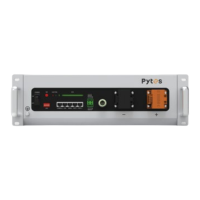What to do if my Pytes E-BOX is unable to start?
- CclarkharryJul 27, 2025
If your Pytes Battery Pack won't start, it could be due to a discharged battery. If the battery starts charging, it should return to normal operation after the charging process is complete. If the battery does not enter charging mode, contact your local reseller or Pytes for assistance.


